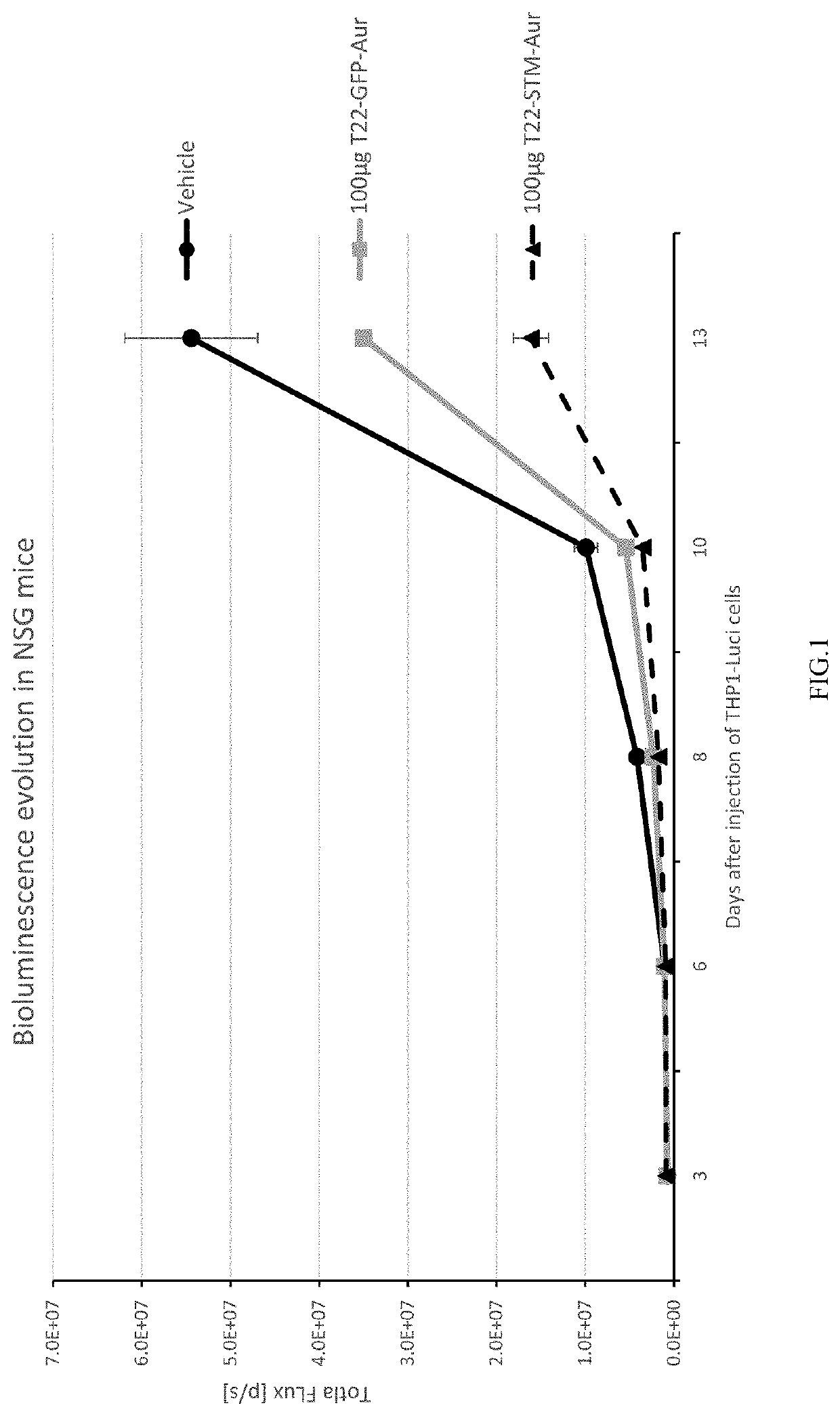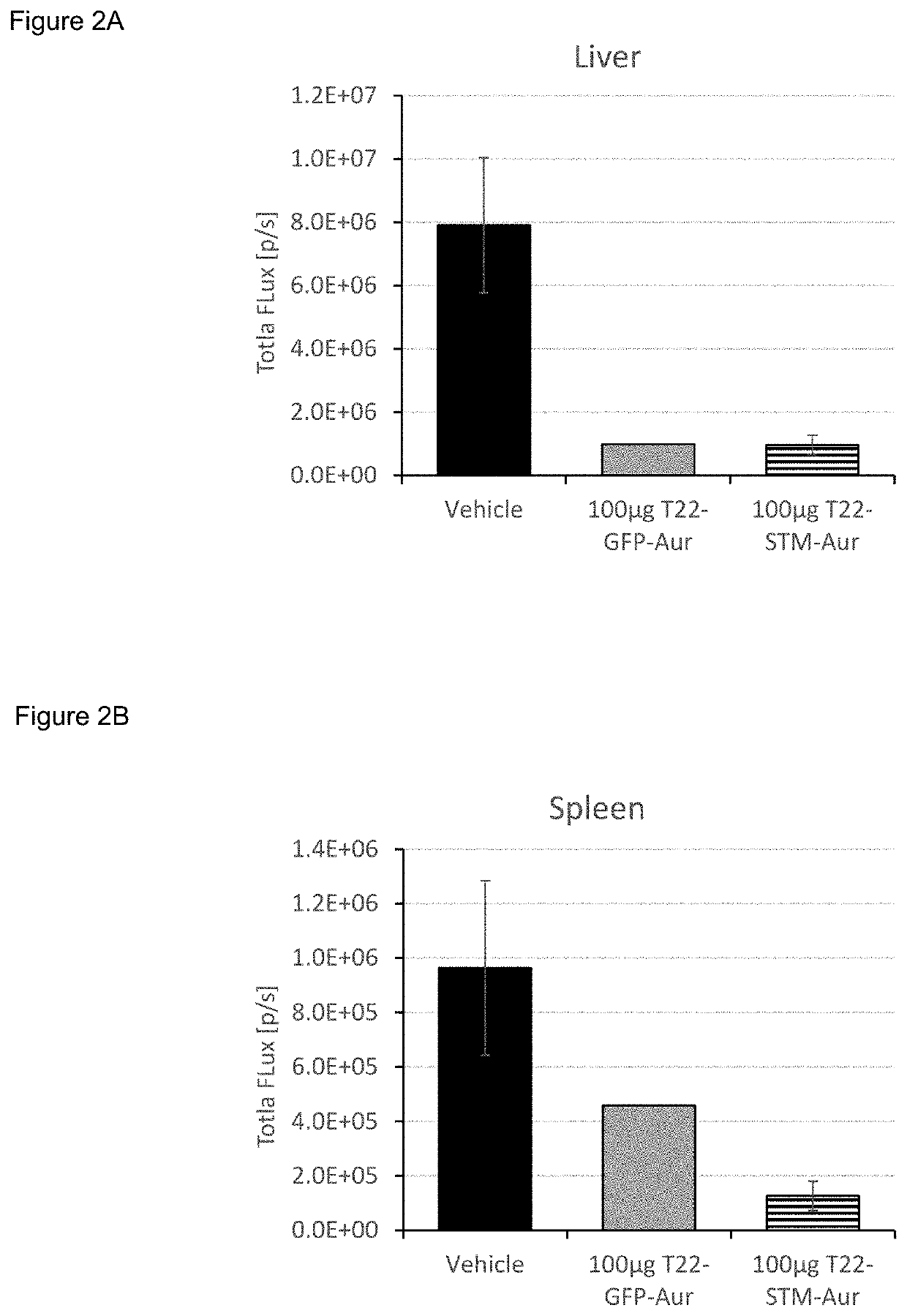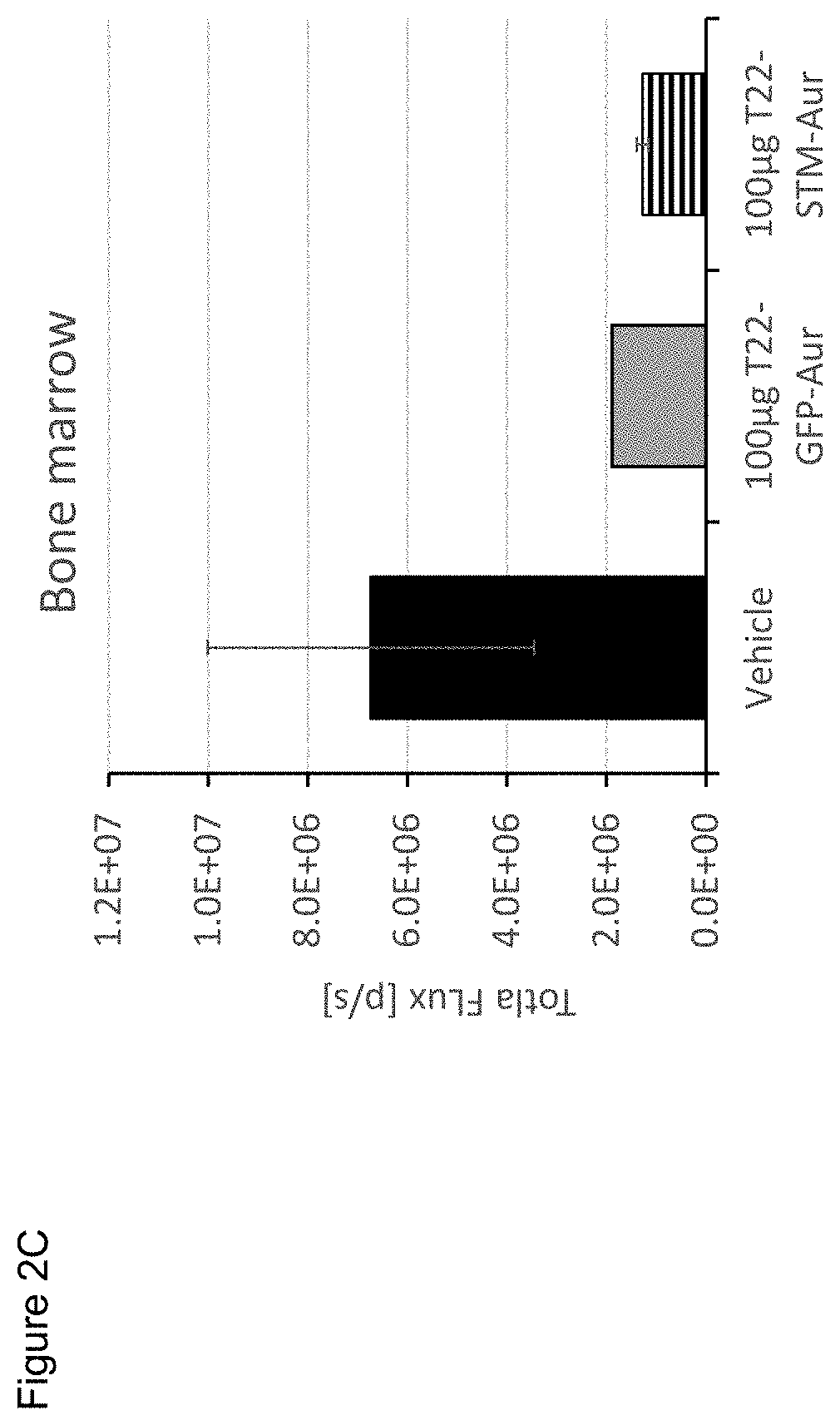Therapeutic nanoconjugates and uses thereof
a technology of nanoconjugates and nanoconjugates, which is applied in the direction of drug compositions, peptide/protein ingredients, pharmaceutical delivery mechanisms, etc., can solve the problems that the structure complexity of antibodies may become cumbersome in terms of cost and synthesis, and achieve the effect of reducing the cost and synthesis burden
- Summary
- Abstract
- Description
- Claims
- Application Information
AI Technical Summary
Problems solved by technology
Method used
Image
Examples
example 1
Synthesis of Therapeutic Nanoconjugates
Synthesis of the T22-STM-H6-Aur therapeutic nanoconjugate
[0373]T22-STM-H6 protein nanoparticles (in 166 mM NaCO3H pH=8 buffer) are reacted with maleimide functionalized Monomethyl Auristatine E (MMAE) (resuspended in 50% PBS / 50% Acetonitrile) in a one-pot reaction at 1:50 protein:MMAE ratio for 4 h at room temperature. Generated nanoconjugates are subsequently charged into a HiTrap Chelating HP column (GE Healthcare), previously charged with Ni2+ (NiCl2), for IMAC affinity chromatography and washed within the column for 30 min with wash buffer (20 mM Tris, 500 mM NaCl, 10 mM imidazole pH=8) at constant flow in order to remove no reacted MMAE molecules before one-step isocratic elution with elution buffer (20 mM Tris, 500 mM NaCl, 500 mM Imidazole pH=8). Eluted nanoconjugates are then dyalized agains 166 mM NaCO3H pH=8 buffer for high concentration imidazole containing elution buffer removal using 12-14MWCO membranes, 0 / N at 4° C. Final nanoconj...
example 2
Characterization of the T22-STM-H6-Aur Nanoconjugate and Determination of Drug / Nanoparticle Ratio
[0375]The nanoparticles of T22-GFP-H6 are formed by an average of 15 monomers, and each monomer of T22-GFP-H6-FdU joins about 4 molecules of oligo-FdU. This is equivalent to about 60 molecules of oligo-FdU per nanoparticle. As for the T22-GFP-H6-Auristatin, the data show that it binds up to 30 Auristatins per protein, which is equivalent to about 450 Auristatins per nanoparticle.
[0376]The nanoparticles of T22-STM-H6 are formed by an average of between 15-20 monomenos. Mass spectrometry suggests that no less than 3 Auristatine molecules are joined to each protein monomer and at least up to more than 15 Auristatine molecules per monomers.
example 3
Evaluation of the Antitumoral Effect of T22-STM-H6-Auristatin, Compared to T22-GFP-H6-Auristatin, in a Disseminated CXCR4+ AML Mouse Mode
Methods
[0377]NSG (NOD-scid IL2Rgammanull) female mice (5 weeks old) were intravenously (IV) injected with luciferase-transfected THP1 cells (THP-1-Luci; 1×106 cells / 200 μL). Mice were divided randomly into three different experimental groups. One group (VEH; n=3) was IV injected with the vehicle of the nanoconjugates (Buffer NaCO3H+NaCl pH=8), the experimental group (T22-STM-AUR; n=2) with 100 μg of T22-STM-H6-Auristatin and a positive control group (T22-GFP-AUR; n=1) with 100 μg of T22-GFP-H6-Auristatin. All compounds were administered daily for a total of 9 doses. The evolution of AML dissemination in mice was monitored using the IVIS Spectrum equipment three times per week until the day of the euthanasia. Animal weight was measured the same day as that of BLI analysis. All mice were euthanized the day that the first animal presented relevant sig...
PUM
 Login to view more
Login to view more Abstract
Description
Claims
Application Information
 Login to view more
Login to view more - R&D Engineer
- R&D Manager
- IP Professional
- Industry Leading Data Capabilities
- Powerful AI technology
- Patent DNA Extraction
Browse by: Latest US Patents, China's latest patents, Technical Efficacy Thesaurus, Application Domain, Technology Topic.
© 2024 PatSnap. All rights reserved.Legal|Privacy policy|Modern Slavery Act Transparency Statement|Sitemap



